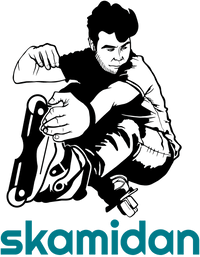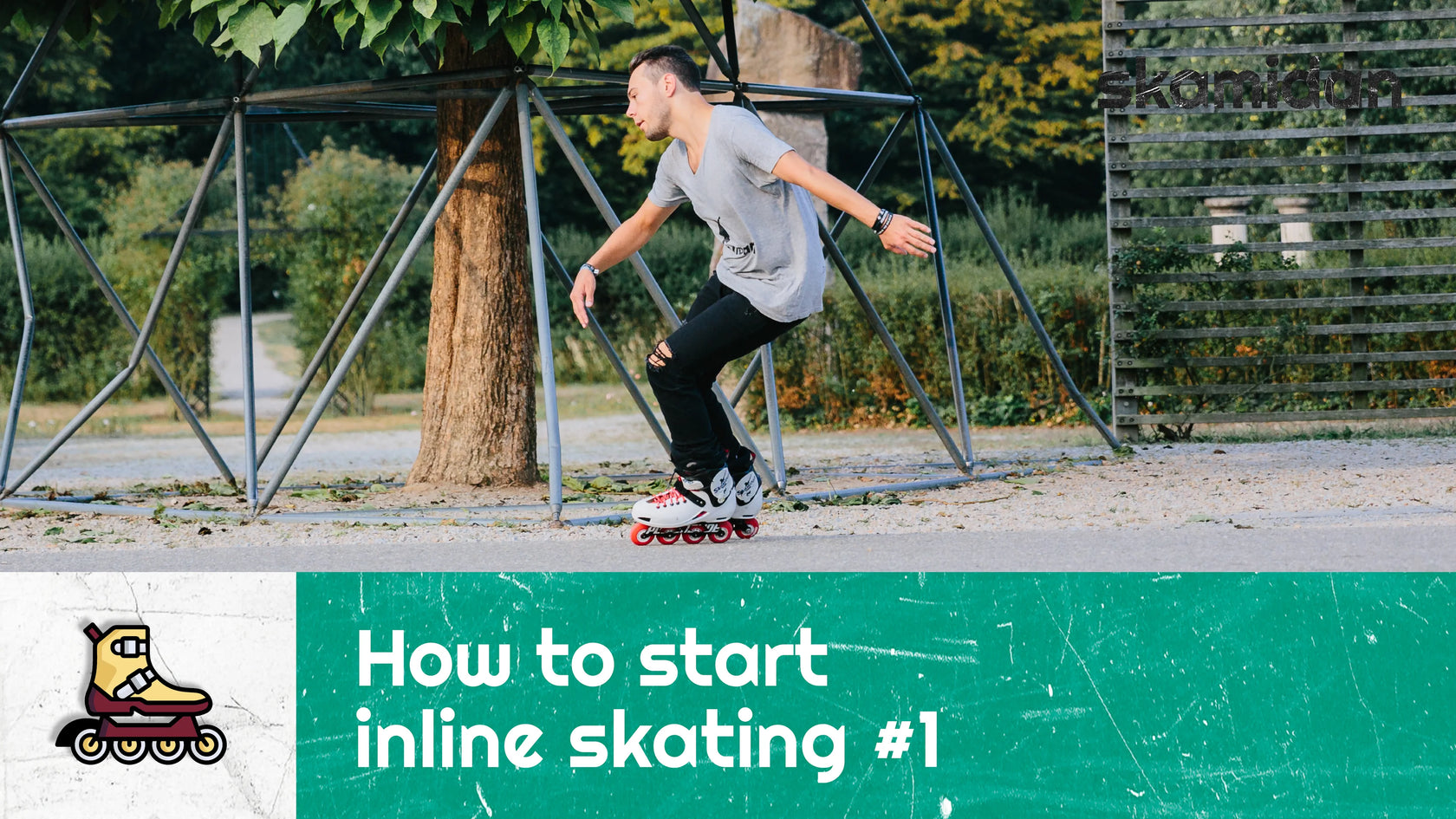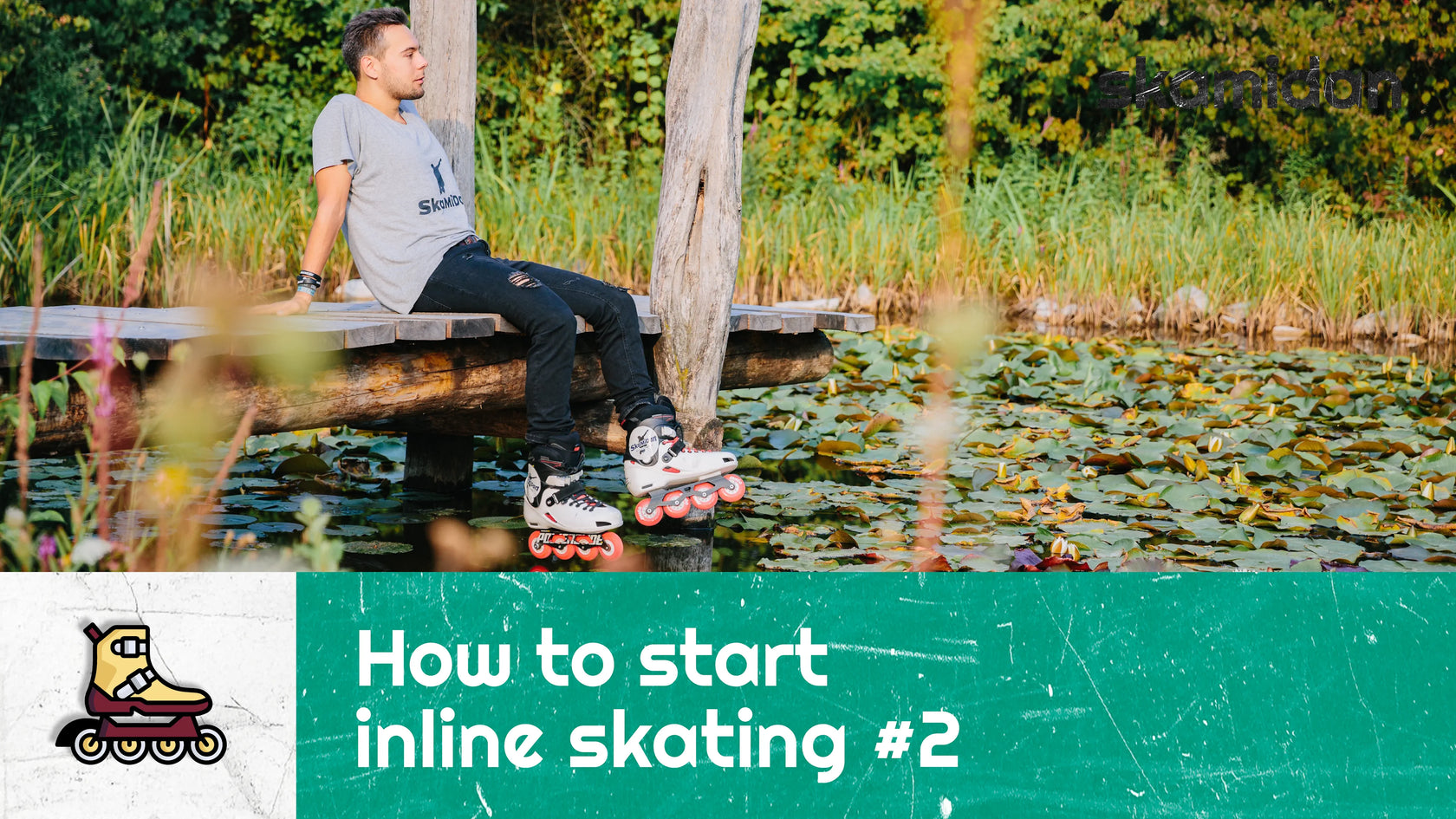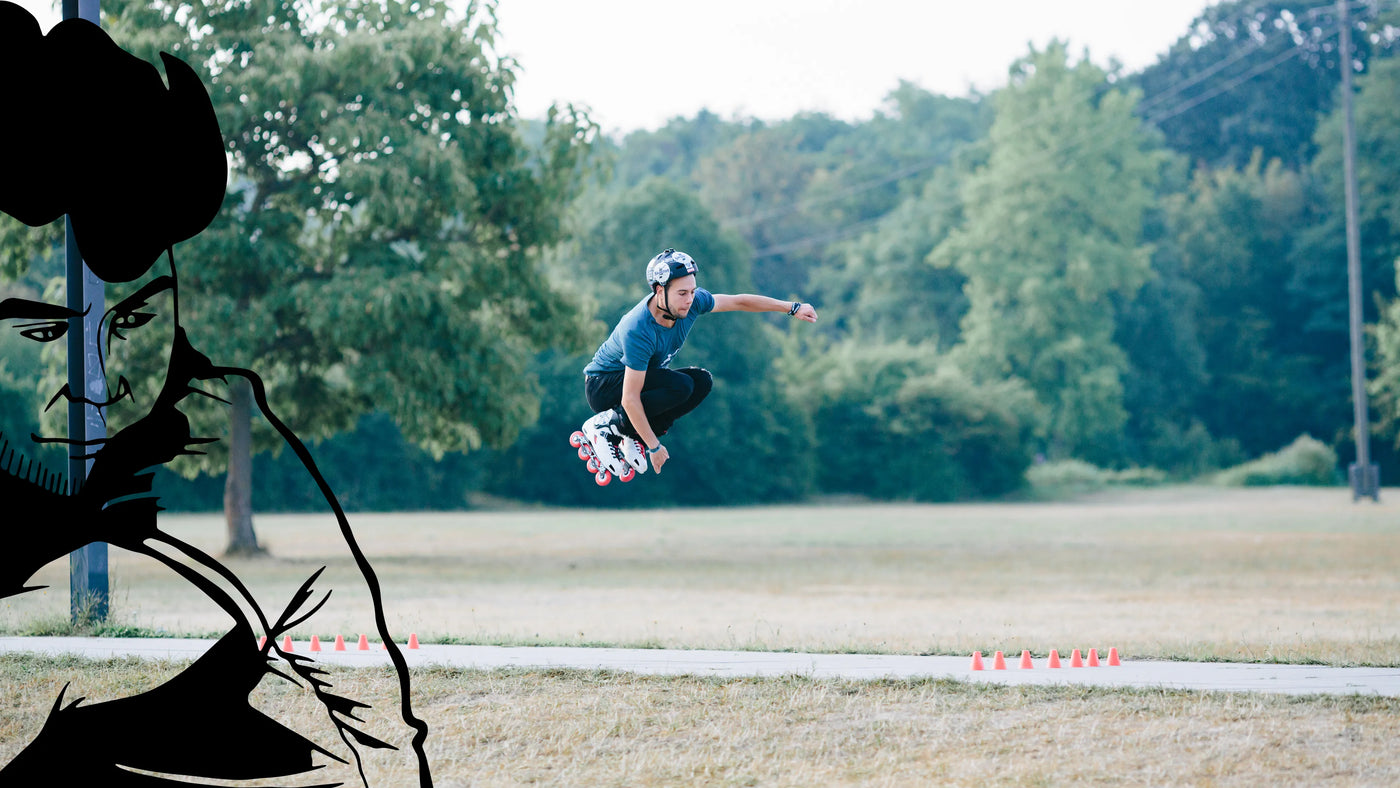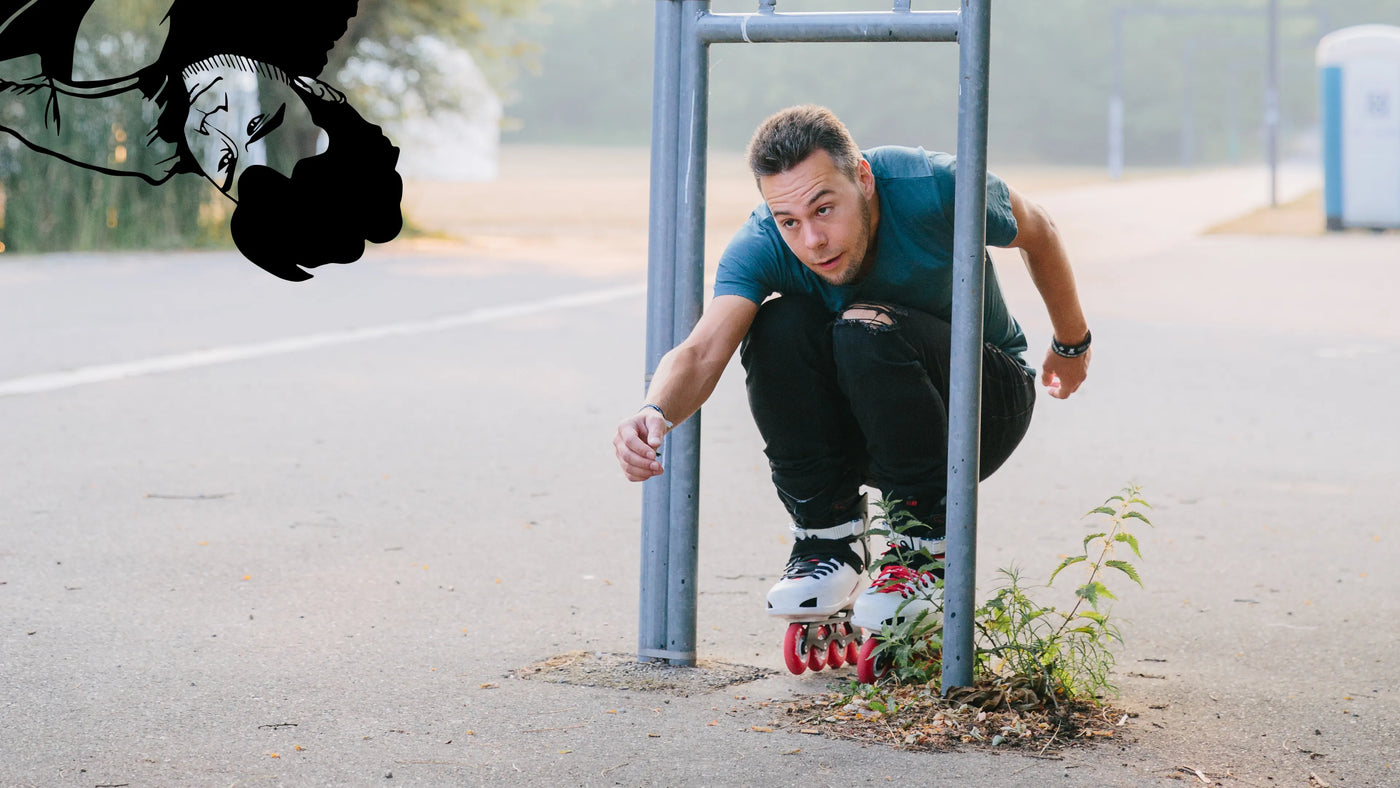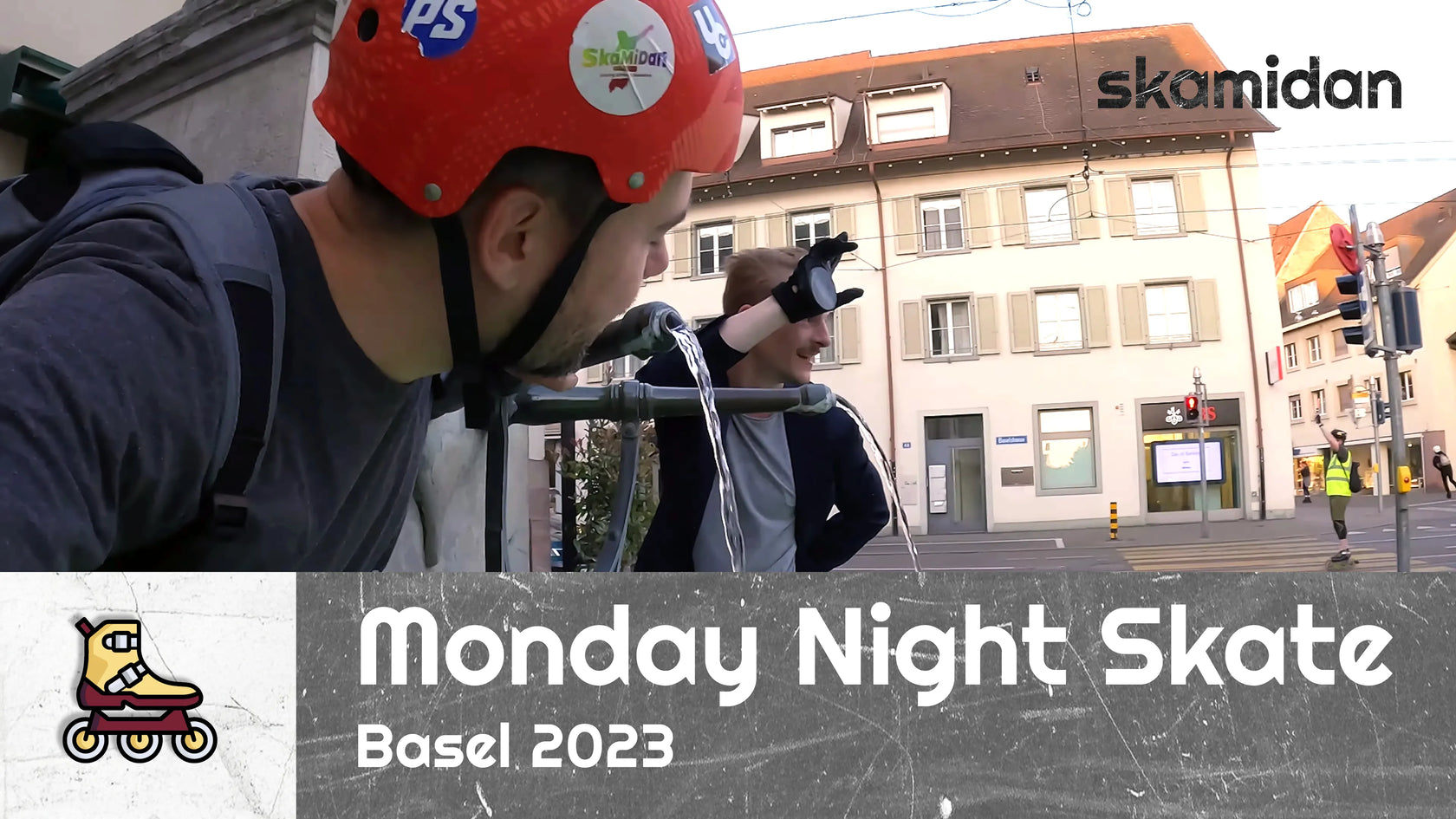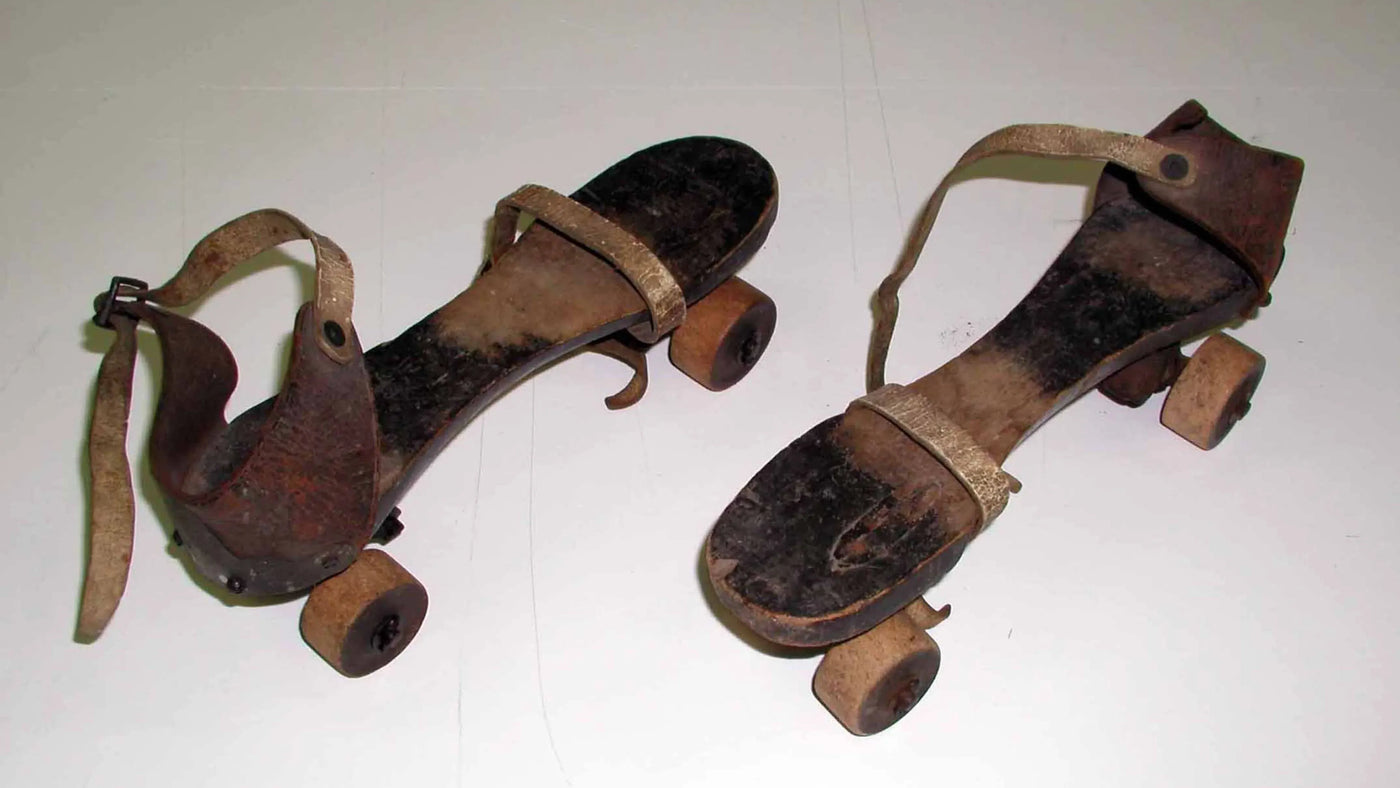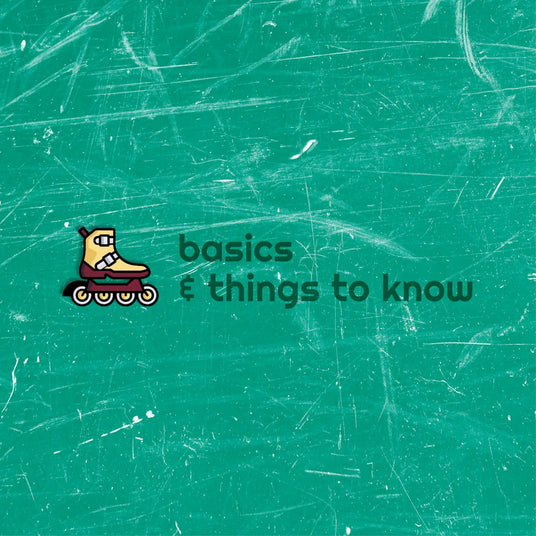
What is inline skating?
The fascinating world of inline skating
Inline skating is a joint-friendly and versatile sport in which you move on wheels that are mounted in a straight line under special shoes called inline skates.
Inline skating is practiced as a leisure activity, a fitness workout, and also as a competitive sport.
The wide range of different disciplines and the many facets of inline skating make this sport extremely diverse and multifaceted.
The Basics of Inline Skating – Everything You Need to Know
The fascinating world of inline skating
Using the following table of contents, you can easily navigate through this blog and jump directly to the topics that interest you:
- Video Tutorial
View - What is Inline Skating?
Introduction, safety, and health
View - The Diversity of Inline Skating
The disciplines that inline skating includes
View - What Rules Exist in Inline Skating?
Legal and unwritten rules
View - A Journey Through the History of Inline Skating
How inline skating came to be
View
Learn Inline Skating for Beginners
The first steps on inline skates
In this video, we’ll show you how to easily get started with inline skating yourself.
Before we begin, here’s a quick overview of what you can expect in the video:
First, we’ll take a look at how to choose the right skate and how to put it on correctly.
Next, we’ll go over protective gear – which pads you should wear when inline skating.
After that, we’ll practice the correct body posture together – this will help you skate safely and avoid falling forward or backward.
Learn Inline Skating for Beginners
Other important steps on inline skates
In this video, we first learn how to skate forward normally on inline skates.
After that, I’ll show you your first slalom technique: the Lemon.
Building on that, we move to the Crossover Lemon, and you’ll also learn how to sprint properly.
Finally, we’ll cover how to safely and easily skate over small obstacles and uneven ground—so you don’t lose your balance and fall.
Getting Started, Safety, and Health
What is inline skating?
1. The Fascinating World of Inline Skating
Inline skating is a joint-friendly, exciting, and versatile sport in which you move on special shoes called inline skates. These skates feature a row of wheels mounted in a straight line beneath a frame (also known as a chassis).
Whether as a fun leisure activity, fitness workout, or competitive sport: Inline skating captivates with its versatility, dynamism, and lightness.
2. Inline Skating – The Perfect Mix of Sport and Fun
Inline skating offers more than just physical activity. It combines endurance training, coordination, and muscle strengthening in one fluid movement.
This roller sport is especially popular because it is effective, low-impact, and tremendously fun.
You can enjoy inline skating just for fun, use it as part of your fitness routine, or develop your skills in one of many disciplines such as freestyle slalom, aggressive skating, off-road skating, or speed skating.
3. Why Inline Skating Is So Healthy
Inline skating trains:
- Intermuscular coordination
the interaction of multiple muscle groups - Muscular endurance & stamina
an ideal cardio workout for your cardiovascular system - Body control and balance
through controlled movements and specific techniques
This combination makes skating the perfect everyday balance – and an ideal sport for all ages.
When you're well-prepared, inline skating is not dangerous – especially if you wear the proper protective gear:
- Helmet:
Protects your head in case of a fall - Wrist guards:
Prevent injuries when catching yourself - Elbow & knee pads:
Cushion your fall safely
We recommend getting familiar with your equipment before hitting the road so you feel safe and confident. Because: The better your protection, the more fearless your progress.
A short warm-up – such as light stretching – is also very beneficial before skating.
When your body is warmed up, the risk of injury is significantly lower.
4. Your Learning Path – How to Become an Inline Skating Pro
The first time on skates might feel a bit shaky – and that's totally normal. So start from the ground up:
- Learn how to fall safely:
So you land without injury and skate fearlessly - Body posture and foot positioning:
A solid stance is the foundation for safe skating - Basic techniques:
From your first glides to effective stopping methods - Advanced skills and tricks:
These don’t just look good and make skating more fun – they teach you trust in your body and help you move confidently in any situation
5. Learn Inline Skating the Right Way – with SkaMiDan
Our mission is to take your skating to the next level! Whether you're a beginner or looking to improve your skills, we're here to support you:
- With detailed video tutorials
- With trick clips to visualize techniques
- With step-by-step text instructions
- With trick glossaries for different skill levels
And of course, with personal support through our courses, individual advice (via phone, WhatsApp, email, etc.), and our wide range of skating gear and equipment
Are you ready to roll?
Then dive into our tutorials, book your first skating course with us, or explore more about inline skating and its history in this blog.
These disciplines are part of inline skating
The diversity of inline skating
These Disciplines Are Part of Inline Skating
Most of us are familiar with regular inline skating or fitness skating. But did you know that inline skating consists of an almost endless number of disciplines and creative variations?
In the following, I’ll explain the most important areas and disciplines of inline skating:
- Recreational Inline Skating
Recreational skating refers to inline skating as a leisure activity without specific goals, such as performance metrics. We simply roll around to have fun, get some movement, or explore our surroundings. - Fitness Inline Skating
Fitness skating refers to inline skating as a form of physical training. We keep fit by skating either alone or with others. Compared to other sports, fitness skating is very joint-friendly. It strengthens your cardiovascular system, endurance, muscle coordination, and overall fitness. - Speed Inline Skating
This discipline focuses on reaching high speeds. Unlike fitness skating, which emphasizes general health and endurance, speed skating is all about velocity. We practice on specially designed tracks or race circuits to evaluate and perfect our top speeds. - Marathon Inline Skating
In marathon skating, the goal is to cover long distances – like the internationally known Berlin Marathon, which spans approximately 42 km. It requires excellent fitness and an optimized balance between muscular endurance and stamina. - Urban Inline Skating
Urban skating is all about agile movement through city environments. We skate through towns, jump stairs and curbs, and race from point A to B as efficiently and creatively as possible. Every obstacle becomes an opportunity for a trick – stairs, ledges, plazas, and alleyways all become skateable terrain. - Big Wheel Blading
A form of urban skating – not necessarily using larger wheels but incorporating more creative and technical elements like stalls and grinds. These skates feature special soulplates and grooves. - Wizard & Mushroom Inline Skating
Wizard skating is a creative style using longer frames. It blends into urban skating and mushroom blading, emphasizing expressive tricks, flowing transitions, and spot creativity. No clear boundary exists between Wizard, Urban, and Mushroom skating – they often overlap. - Aggressive Inline Skating (aka Blading)
Also known as stunt skating or blading in the scene. Tricks are performed in skateparks or urban spots: grinds, airs, flips, spins, and more. This doesn’t have to be done in a park – handrails, ledges, and stairs are all fair game. Rail grinding is often seen as the "royal discipline." - Inline Freestyle Slalom Skating
This involves performing tricks and choreographies around cones. It’s not about speed – it’s about style, creativity, and clean execution. Skaters often weave in and out between multiple cone lines with seamless transitions and fluid movements. - Inline Speed Slalom Skating
Unlike freestyle, the aim here is to skate through a specific row of cones as quickly as possible – typically on one foot and with a running start. - Inline Freestyle Slide
Slides are executed on flat surfaces or mats. It’s about controlling your momentum and using your wheels to glide (slide) across the surface in creative ways. - Inline Freestyle Jump
Skaters jump over a bar (similar to high jump), mounted between two stands. The bar is adjustable in height and challenges vertical power and landing technique. - Inline Pump Skating
A lesser-known term describing skating on pump tracks – hilly, wave-like tracks. The goal is speed and flow, often combined with jumps and spins. - Offroad & SUV Inline Skating
Unlike other disciplines, this uses pneumatic wheels made from a tire, tube, and rim. Terrain includes dirt roads, fields, trails, and even snow. - Nordic Inline Skating (Cross Skating / Skiken)
A hybrid of inline skating and Nordic walking. It uses large pneumatic wheels and ski poles, allowing skating even on rough terrain like forest trails or gravel paths. - Inline Hockey
Hockey on inline skates, usually played on dedicated rinks with smooth surfaces, similar to ice hockey fields. Played both indoors and outdoors. - Inline Street Hockey
This version is played casually on various outdoor surfaces like asphalt, concrete, and driveways – less formal but equally fun. - Downhill Inline Skating
An extreme discipline focused on high-speed descents down hills or mountain roads. Control, technique, and safety are key. - ...And Many More
In addition to the disciplines mentioned above, there are numerous creative and evolving forms of inline skating. But these are the foundational categories that cover most of what defines modern inline skating.
Legal and unwritten rules
What are the rules of inline skating?
Legal Situation for Inline Skating in Germany (As of 2025)
Legal Classification:
According to § 24 of the German Road Traffic Regulations (StVO), inline skaters are not considered vehicles, but rather special means of transport (like roller skaters or skateboarders).
This means you are not allowed to skate on the road, but only on sidewalks or designated areas.
Respectful and cautious skating that occasionally crosses a street is usually tolerated.
Areas where skating is legally allowed:
- Sidewalks
Skating is generally allowed unless explicitly prohibited by a sign. - Pedestrian zones
Skating is permitted unless a posted sign prohibits it. - Bicycle lanes
Skating is only officially allowed if there is an additional sign saying “Inline skaters allowed” (“Inlineskater frei”).
Otherwise, it's only tolerated. - Roads (streets)
Skating on roads is prohibited.
Exceptions: closed roads during events like Skate Nights or similar. - Skateparks & designated inline tracks
Skating is allowed unless a sign explicitly forbids it.
Behavioral Rules:
- Duty to show consideration for pedestrians (§ 1 StVO)
- Walk speed on sidewalks when it's crowded
- No reckless behavior – e.g. slaloming through crowds
- Visibility at night is mandatory: Use reflectors or lights. (We offer light-up wheels, LED clips, and more in our shop.)
- Is a helmet required?
There is no legal helmet requirement, but we strongly recommend wearing one.
Especially if you're skating in a sporty or trick-focused style (e.g. urban skating), a helmet is highly advisable.
What are the consequences of violations?
Fines for unsafe behavior or skating in prohibited areas
Liability in case of accidents – You may be held legally responsible if you injure someone or break traffic laws.
Unwritten Rules – The Skater Etiquette (Skater Knigge)
What you should do:
- Maintain eye contact with others to coordinate and signal intent
- Use hand signals or clear body language when changing direction
- Avoid cutting off or startling pedestrians
- Show respect to dogs, parents with children, kids, and the elderly
- Skate slower and more carefully in unclear or narrow situations
- Wear protection (at least a helmet) – not just for yourself, but as a role model for others (especially children)
What to avoid:
- Slaloming through crowds
- Skating with loud music in your ears (dangerous due to reduced awareness)
- Holding onto cars or other traffic to be pulled along (illegal and very dangerous)
- Skating on busy bike lanes without explicit permission
- Being aggressive towards pedestrians, skaters, or bystanders
A highlight for all roller sports fans
Monday Night Skate 2023
The Monday Night Skate (MNS) Basel is one of the largest skating events in the region.
It brings together skating enthusiasts from a wide range of disciplines – from inline skating, slalom skating, and roller skating to speed skating, aggressive skating, and many more.
No matter what your background is – at MNS Basel, everyone rolls, celebrates, and laughs together.
It’s not just about skating, but about community, good vibes, and the joy of movement.
This is how inline skating came about
A trip into the history of inline skating
The Origin of Inline Skates – From Ice to Asphalt
The idea of inline skates, like many brilliant inventions, originated in a completely different sport: ice skating. As early as the 18th century, inventors dreamed of bringing the elegant glide of ice skating to the streets.
The First Inline Skates – A Visionary Invention
The very first prototype of inline skates was developed in 1760 by Belgian clockmaker Jean-Joseph Merlin.
His vision:
To equip classic ice skates with wheels.
The result was an early roller skate with two metal wheels in a single line, mounted under an ice skate frame.
Unfortunately, the lack of smooth surfaces at the time meant the idea didn’t catch on.
The First Patent – The Birth of Inline Skates
On April 22, 1823, the first patent for an inline skate was granted in England to Robert John Tyers of London.
He also modified ice skates and equipped them with several steel wheels in a row.
This marked the official birth of inline roller skates – though they were still far from becoming mainstream.
The Birth of Roller Skates – A Gamechanger
Since roads were anything but smooth back then, inline skates couldn’t establish themselves.
Instead, a groundbreaking development took center stage: In 1863, American James Leonard Plimpton invented the first roller skates with four wheels arranged on two axles – two in the front, two in the back.
This design allowed for greater stability and maneuverability, which is why roller skates quickly gained popularity.
The Renaissance of Inline Skates – Rollerblade Leads the Way
It wasn’t until over 100 years later, in 1979, that inline skates made a true comeback.
American ice hockey player Scott Olson founded the company Rollerblade and introduced modern inline skates featuring ball bearings, rubber wheels, and innovative frames.
These skates offered a completely new skating experience – fast, agile, and dynamic.
The name Rollerblade became so popular that it is still used today as a synonym for inline skates – much like “Kleenex” for tissues.
Inline Skating Goes Global – Education, Disciplines & Diversity
In 1995, a new era began: Germany saw the first certified inline skating instructors, trained by the International Inline Skating Association (IISA).
This paved the way for professional classes, structured learning programs, and – most importantly – the emergence of numerous inline skating disciplines.
Today, the world of inline skating includes a wide range of exciting categories, such as:
- Fitness Skating
- Freestyle Slalom
- Aggressive Inline Skating
- Speed Skating
- Offroad Skating
- ... and many more!
This boom was accompanied by the development of specialized inline skates and roller skates, tailored to each discipline.
An Idea with History – and a Bright Future
What started as an idea to bridge the ice-free season has grown into a global movement.
Inline skating today is more than just a sport – it’s a lifestyle that combines fitness, freedom, and pure skating fun.
So, strap on your skates and become part of this fascinating story.
The street is waiting for you!
